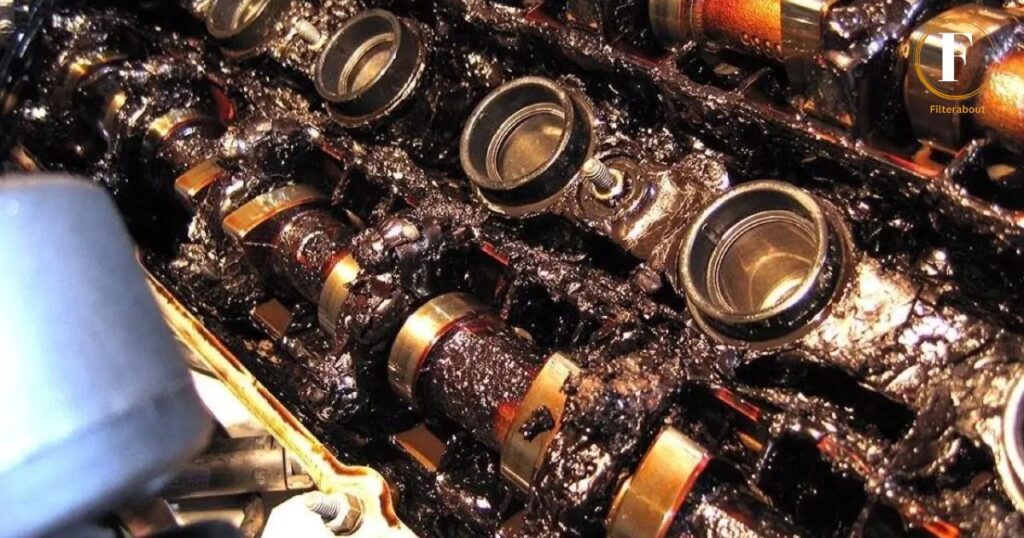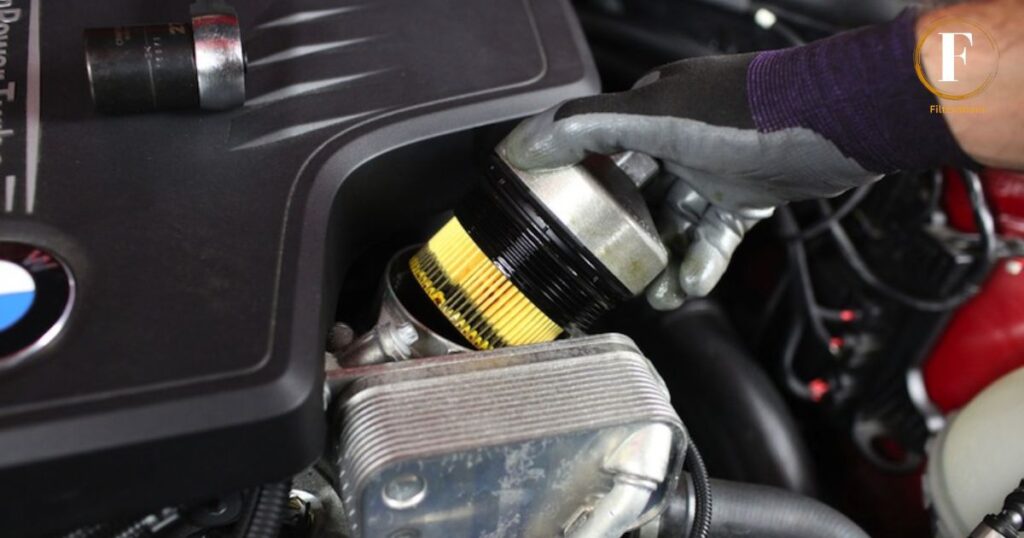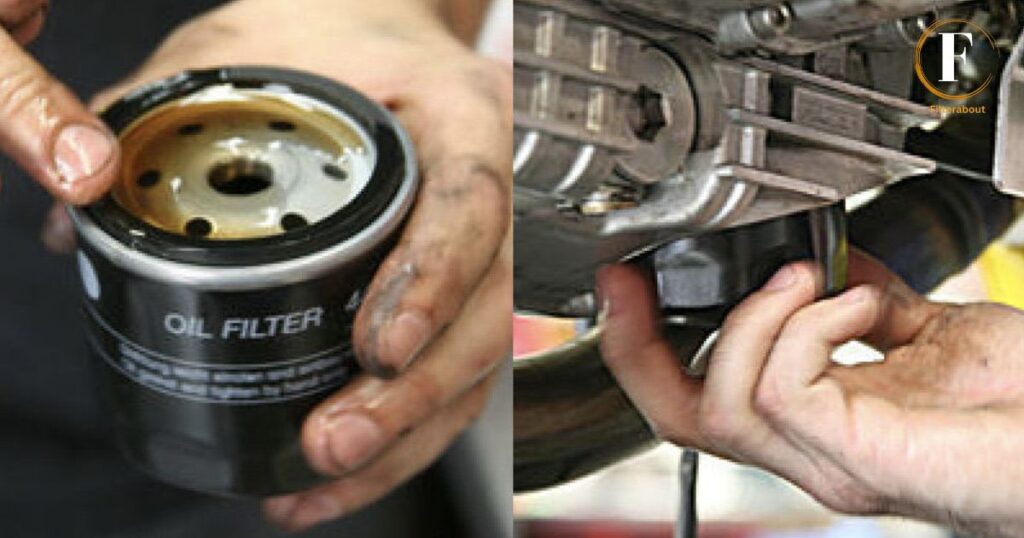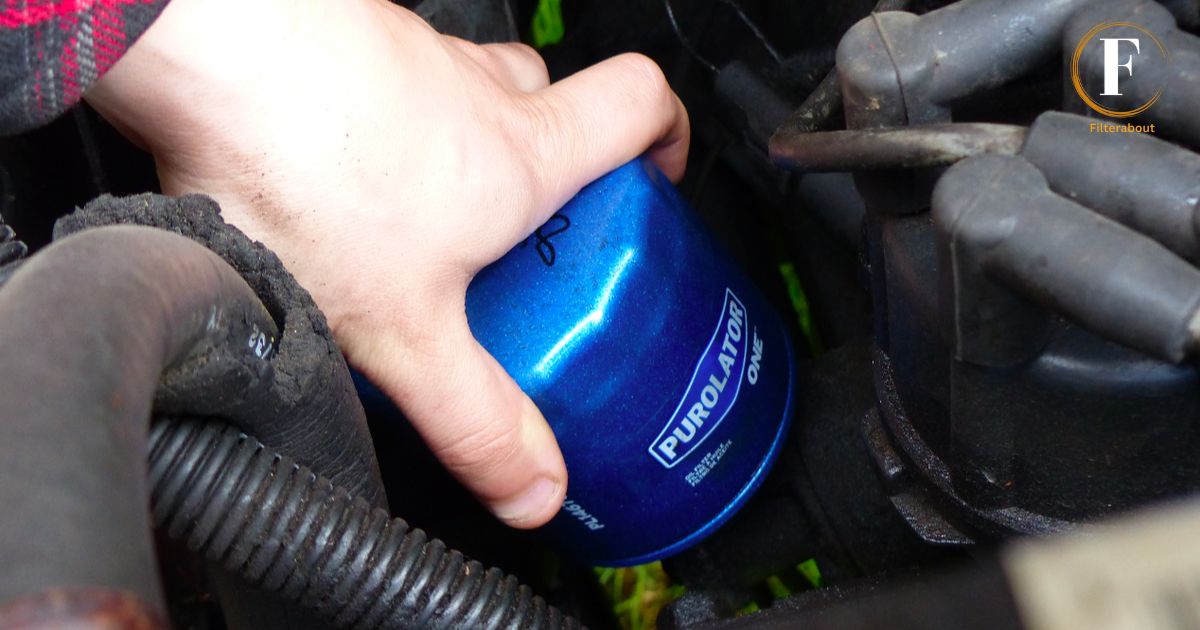An oil filter is a device that cleans engine oil by removing contaminants ensuring smooth operation and prolonging engine life. It traps dirt metal particles and debris preventing them from circulating and causing damage within the engine.
Overtightening risks damaging the seal causing leaks while being too loose might lead to oil seepage. How tight should an oil filter be? Aim for a firm hand-tightened seal typically about three-quarters to one full turn after the gasket makes contact Balancing tightness is key for optimal performance without risking damage.
To avoid leaks tighten the oil filter by hand until its snug usually about three-quarters to one full turn after it contacts the surface. Overtightening risks damaging the seal while being too loose might lead to oil seepage. Finding the right balance ensures optimal performance without causing harm.
What is an Oil Filter and Their Uses?
It is a crucial component in an internal combustion engine that plays a vital role in maintaining the health and performance of the engine. Its primary function is to oil filter out impurities and contaminants from the engine oil preventing them from circulating through the engine components. These impurities can include dirt metal particles sludge and other debris that can accumulate in the oil over time.
It helps to keep the engine oil clean and free from harmful particles, which if left unchecked could lead to increased wear and tear on engine parts. Clean oil is essential for proper lubrication, heat dissipation and overall engine efficiency. Without an effective oil filter, these contaminants could cause damage to the engine reducing its lifespan and potentially leading to costly repairs.
Regular maintenance including oil and oil filter changes, is crucial to ensure the proper functioning of an engine. Over time oil filters can become saturated with contaminants limiting their effectiveness. Therefore replacing them at recommended intervals typically during routine oil changes is essential for maintaining optimal engine performance and prolonging the engine’s life.
What Happens If Wrong Oil Filter Is Used?

Using the wrong oil filter can lead to several potential issues with your vehicle’s engine. Oil filters are designed to fit specific engines and have varying filtration capacities. If an incorrect oil filter is used it might not fit properly or have the necessary filtration capabilities leading to inefficient oil flow and filtration.
One of the primary concerns is poor filtration. An ill-fitting or incorrectly sized oil filter may not trap contaminants effectively. This can result in these particles circulating through the engine causing accelerated wear and tear on vital components. Over time, this can lead to decreased engine performance reduced fuel efficiency and potentially costly damage.
Moreover using the wrong oil filter might cause oil leaks. An oil filter that doesn’t properly seal or fit can lead to oil bypassing the filtration system or leaking out. This loss of oil can lead to insufficient lubrication in the engine which can cause overheating and severe damage if not addressed promptly. To avoid these issues, always ensure you’re using the correct oil filter specified for your vehicle’s make model, and engine.
Engine Consequences
Engine Consequences explores the aftermath of unexpected actions revealing the ripple effects that follow a single decision. It delves into the intricate web of cause and effect illustrating how one small change in direction can lead to significant outcomes shaping the course of events in unforeseen ways.
Performance and Longevity Impact
Performance and longevity are intimately linked in engines. Neglecting maintenance or pushing a vehicle beyond its limits can impair performance and shorten its lifespan. Regular care and mindful usage contribute to optimal performance and extend an engine’s longevity ensuring reliability over time
How Often Should Oil Filter be Changed?
Certainly! Here are seven steps for changing an oil filter.
- Gather Supplies: Collect necessary items like a new oil filter a wrench an oil filter wrench (if needed) a drain pan gloves and some rags.
- Prepare the Vehicle: Park the car on a level surface and let the engine cool down to avoid burns. Lift the car using a jack if needed and secure it with jack stands.
- Locate the Oil Filter: Refer to the owner’s manual to find the oil filter’s location. Usually, it’s underneath the car near the engine.
- Drain Old Oil: Place the drain pan beneath the oil pan loosen the drain plug using a wrench and let the old oil drain completely.
- Remove the Old Oil Filter: Use an oil filter wrench if necessary to unscrew the old oil filter. Be cautious as some oil might still be in the oil filter.
- Prepare and Install the New oil Filter: Apply a thin layer of fresh oil to the rubber gasket on the new oil filter. Screw it in by hand until snug. Avoid over-tightening.
- Refill Oil and Check for Leaks: Replace the drain plug refill the engine with the recommended amount of new oil, and check for any leaks around the oil filter and drain plug. Dispose of the old oil properly at a recycling center.
Always consult your car’s manual or seek professional help if you’re uncertain about performing an oil filter change.
Factors Affecting the Tightness of an Oil Filter

Absolutely here’s a concise table in 8 steps outlining the factors affecting the tightness of an oil filter.
| Step | Factor | Influence on Tightness of Oil Filter |
| 1 | Thread Condition | Determines proper threading for seal |
| 2 | Gasket Quality | Affects sealing ability |
| 3 | Clean Surfaces | Ensures proper contact for sealing |
| 4 | Proper Installation | Impacts the tightness level |
| 5 | Torque Applied | Correct torque for secure fit |
| 6 | Heat/Cold Exposure | Can affect gasket material |
| 7 | Oil Pressure | Influences stress on the oil filter |
| 8 | Vibration Levels | May loosen the oil filter over time |
How Tight Should Oil Filter Be on Your Vehicle? 5 Steps to Follow
Here are 5 steps Oil filter be on your vehicle:
Drain the Old Oil
Draining old oil from your car is crucial for optimal performance. Regularly changing it prevents engine damage and ensures smooth operation. Dispose of the old oil responsibly to keep the environment clean.
Remove the Old Oil Filter
When replacing your car’s old oil filter make sure the engine is cool. Use a wrench to carefully loosen and remove the old oil filter. Be cautious not to spill oil, and dispose of the oil filter properly to keep your vehicle running smoothly.
Lubricate the Gasket
Before installing a new oil filter apply a thin layer of fresh oil to the rubber gasket. This lubrication helps create a proper seal and prevents leaks. Ensure the gasket is clean and evenly coated for effective engine performance.
Install the New Oil Filter
With the gasket lubricated carefully screw on the new oil filter by hand. Tighten it securely but avoid over-tightening, which could damage the seal. Double-check for a snug fit to ensure proper functioning and prevent oil leaks.
Refill With Fresh Oil and Check for Leaks
After securely installing the new oil filter refill the engine with the recommended amount of fresh oil using a funnel. Once filled wait a few moments for the oil to settle, then check the dipstick to ensure it’s at the correct level. Start the engine let it run briefly then inspect around the oil filter and drain plug for any leaks tightening if necessary.
Why Does the Oil Filter Remain Loose Even After Attempting to Tighten It?

A loose oil filter after attempting to tighten it could stem from a few common reasons. One primary cause is an improperly sized or incompatible oil filter. If the oil filter isn’t the right fit for your vehicle it might not secure properly even if you’ve attempted to tighten it as much as possible.
Another reason could be an issue with the oil filter’s gasket or seal. If the gasket is damaged or not seated correctly it can prevent the oil filter from creating a tight seal against the engine leading to it remaining loose despite efforts to tighten it.
Over-tightening the oil filter can sometimes cause the gasket to deform or create a false sense of tightness. It’s essential to follow the manufacturer’s guidelines regarding the torque specification for the oil filter to avoid these problems.
If the oil filter continues to remain loose despite proper installation it’s advisable to seek the assistance of a professional mechanic to inspect the issue and ensure a secure fit to prevent potential oil leaks or engine damage.
Vibrations
Vibrations are tiny movements that ripple through objects or particles, creating motion. They travel as waves transferring energy from one place to another. From the gentle hum of a guitar string to the seismic rumble of an earthquake vibrations shape our world in diverse and powerful ways.
Double Gaskets
Double gaskets refer to a sealing system that involves using two gaskets instead of one for enhanced protection against leaks or pressure.
This setup creates an extra layer of security often employed in high-stakes environments where maintaining a tight seal is critical such as in industrial machinery pipelines, or automotive engines ensuring added reliability and safety.
Loose Filter Threading
Loose oil filter threading typically refers to a situation where the threads on an oil filter often in a camera lens or any threaded attachment do not tightly secure or align properly.
This can result in a poor fit causing light leaks reduced image quality or difficulty in attaching the oil filter securely. Optimal performance and protection need to have a snug and precise threading between oil filters and lenses to avoid any compromise in the imaging process.
Improper Alignment
Improper alignment occurs when components fail to position or fit correctly leading to inefficiencies or malfunctions. Whether in machinery construction or even relationships, misalignment can cause decreased performance structural weaknesses or misunderstandings. Precision in alignment ensures smooth operations and functionality across various systems and interactions.
Overtightening in the Past
Overtightening in the past refers to the historical practice of excessively tightening components or fasteners often leading to damage or distortion.
This approach while aiming for security can compromise the integrity of materials causing fractures stripped threads or irreversible deformation. Modern understanding emphasizes the balance between secure fastening and preventing unnecessary stress on the objects being tightened.
Incorrect Filter Type
Using the incorrect oil filter type may compromise its effectiveness in various applications. Choosing the right oil filter ensures optimal performance and desired outcomes in systems such as air purifiers, cameras or industrial processes.
Frequently Asked Questions
What Happens If Your Oil Filter Is Not Tight?
A loose oil filter can cause oil leaks loss of oil pressure engine damage and potentially catastrophic failure while driving.
How Do You Know If the Filter Is Too Tight?
The oil filter should be snug but not overly tight. Hand-tightening is usually sufficient. If it’s excessively hard to turn or leaks it’s likely too tight.
What Happens If the Oil Filter Is Too Loose?
A loose oil filter can lead to oil leaks, loss of oil pressure, potential engine damage, and in extreme cases, engine failure.
Is There a Definitive Answer to How Tight an Oil Filter Should Be?
Hand tightening the oil filter until it’s snug is recommended. Over-tightening can damage the gasket, while under-tightening may cause leaks.
How Do I Know If My Oil Filter Is Bad?
Signs of a bad oil filter include decreased oil pressure dirty or contaminated oil engine knocking or metallic sounds during operation.
Conclusion
When it comes to tightening an oil filter the general rule of thumb is to use a firm hand without over-torqueing. Over-tightening can lead to warping the oil filter housing or damaging the gasket causing leaks or making it nearly impossible to remove during the next oil change. How Tight Should An Oil Filter Be On the other hand if the oil filter isn’t tightened sufficiently it might loosen over time resulting in oil leaks and potential engine damage.
A recommended technique is to hand-tighten the oil filter until it makes secure contact with the mounting surface. Once snug give it an additional quarter to half turn to ensure a proper seal.
Always consult the vehicle manual or the oil filter manufacturer’s specifications for the exact torque requirements as these can vary across different vehicles and oil filter models. Using a torque wrench for precision can prevent under or over-tightening, ensuring the oil filter is snug enough to prevent leaks without causing damage.

Alexander Quinn is the author behind Filterabout.com. Known for expertise in diverse topics, Quinn’s content on the website reflects a versatile knowledge base catering to various interests.



![Jynxzi Age, Net Worth, Career[2024]](https://filterabout.com/wp-content/uploads/2024/05/Who-Is-Shanin-Blake-Age-Wiki-Parents-Dating-Net-Worth-300x148.jpg)
![Jynxzi Age, Net Worth, Career[2024]](https://filterabout.com/wp-content/uploads/2024/05/Jynxzi-Age-Net-Worth-Career2024-300x148.jpg)


![Kutty Surumi Net Worth, Bio, Age[2024]](https://filterabout.com/wp-content/uploads/2024/05/Kutty-Surumi-Net-Worth-Bio-Age2024-300x148.jpg)



![Jynxzi Age, Net Worth, Career[2024]](https://filterabout.com/wp-content/uploads/2024/05/Who-Is-Shanin-Blake-Age-Wiki-Parents-Dating-Net-Worth-150x150.jpg)